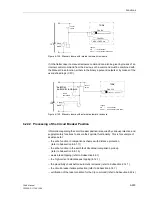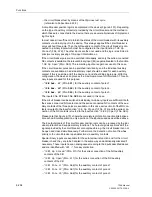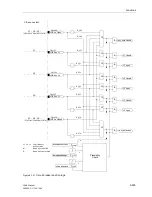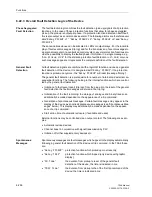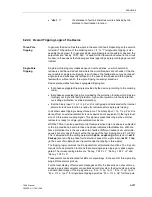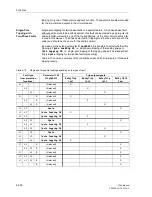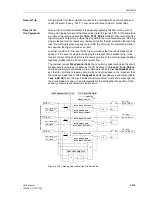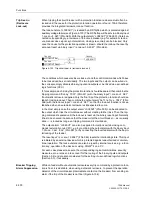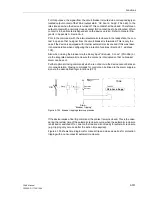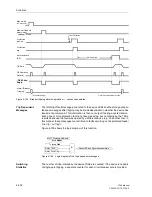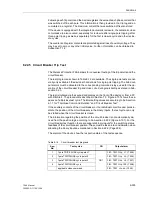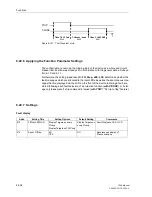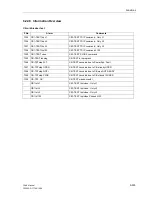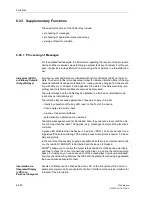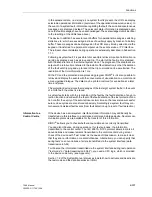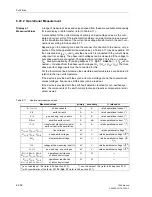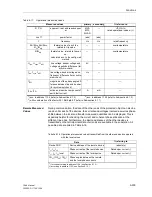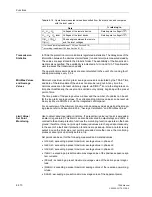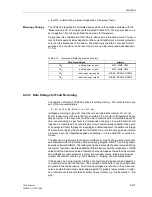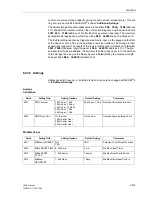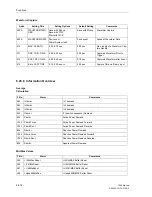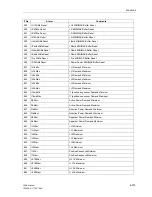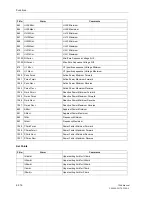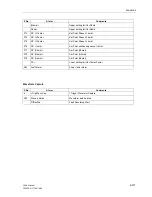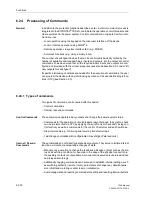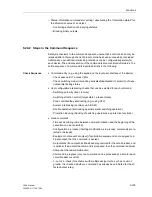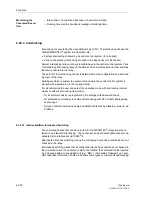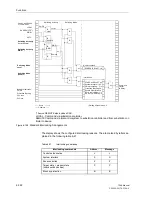
Functions
6-307
7SA6 Manual
C53000-G1176-C156-2
In the quiescent state, i.e. as long as no system fault is present, the LCD can display
selectable operational information (overview of the operational measured values). In
the event of a system fault, information regarding the fault, the so-called spontaneous
messages, are displayed instead. The quiescent state information is displayed again
once the fault messages have been acknowledged. The acknowledgement is identical
to the resetting of the LEDs (see above).
The device in addition has several event buffers for operational messages, switching
statistics, etc., which are saved against loss of auxiliary supply by means of a battery
buffer. These messages can be displayed on the LCD at any time by selection via the
keypad or transferred to a personal computer via the serial service or PC interface.
The retrieval of events/alarms during operation is extensively described in Subsection
7.1.1.
Following a system fault, it is possible to for example retrieve important information re-
garding its progress, such as pick-up and trip. The start of the fault is time stamped
with the absolute time of the internal system clock. The progress of the disturbance is
output with a relative time referred to the instant of fault detection, so that the duration
of the fault until tripping and up to reset of the trip command can be ascertained. The
resolution of the time information is 1 ms.
With a PC and the protection data processing program DIGSI
®
4 it is also possible to
retrieve and display the events with the convenience of visualisation on a monitor and
a menu-guided dialogue. The data may be printed or stored for evaluation at a later
time and place.
The protection device stores the messages of the last eight system faults; in the event
of a ninth fault, the oldest is erased.
A system fault starts with the recognition of the fault by the fault detection of any pro-
tection function and ends with the reset of the fault detection of the last protection func-
tion or after the expiry of the auto-reclose reclaim time, so that several unsuccessful
auto-reclose cycles are also stored cohesively. Accordingly a system fault may con-
tain several individual fault events (from fault detection up to reset of fault detection).
Information to a
Control Centre
If the device has a serial system interface, stored information may additionally be
transferred via this interface to a centralised control and storage device. Several com-
munication protocols are available for the transfer of this information.
DIGSI
®
4 allows you to check whether annunciations are correctly transmitted.
You can also influence, during operation or for test purposes, the information
transmitted to the control center. The IEC 60870–5–103 protocol allows to mark all
annunciations and measurements transmitted to the control center during a local
check of the device with “Test mode” as the cause of transmission, to make it clear
that they are no information on real disturbances. Alternatively, you can specify that
during tests no annunciations at all are transmitted via the system interface (data
transmission inhibit).
To influence the information transmitted via the system interface during test operation
(“test mode” or “data transmission inhibit”), you need a CFC logic, which is provided
in the device on delivery (see Appendix).
Section 7.2 of the System Manual discusses in detail how to activate and deactivate
the test mode and the data transmission inhibit.
Summary of Contents for siprotec 7SA6
Page 2: ...Siemens Aktiengesellschaft Book No C53000 G1176 C156 2 ...
Page 18: ...xviii 7SA6 Manual C53000 G1176 C156 2 ...
Page 32: ...Introduction 1 14 7SA6 Manual C53000 G1176 C156 2 ...
Page 82: ...Hardware and Connections 2 50 7SA6 Manual C53000 G1176 C156 2 ...
Page 119: ...SIPROTEC 4 Devices 4 25 7SA6 Manual C53000 G1176 C156 2 Figure 4 20 CFC Logic example ...
Page 190: ...Configuration 5 62 7SA6 Manual C53000 G1176 C156 2 ...
Page 652: ...Installation and Commissioning 8 78 7SA6 Manual C53000 G1176 C156 2 ...
Page 724: ...Technical Data 10 56 7SA6 Manual C53000 G1176 C156 ...
Page 800: ...Appendix A 76 7SA6 Manual C53000 G1176 C156 2 ...
Page 866: ...Appendix B 66 7SA6 Manual C53000 G1176 C156 2 ...

